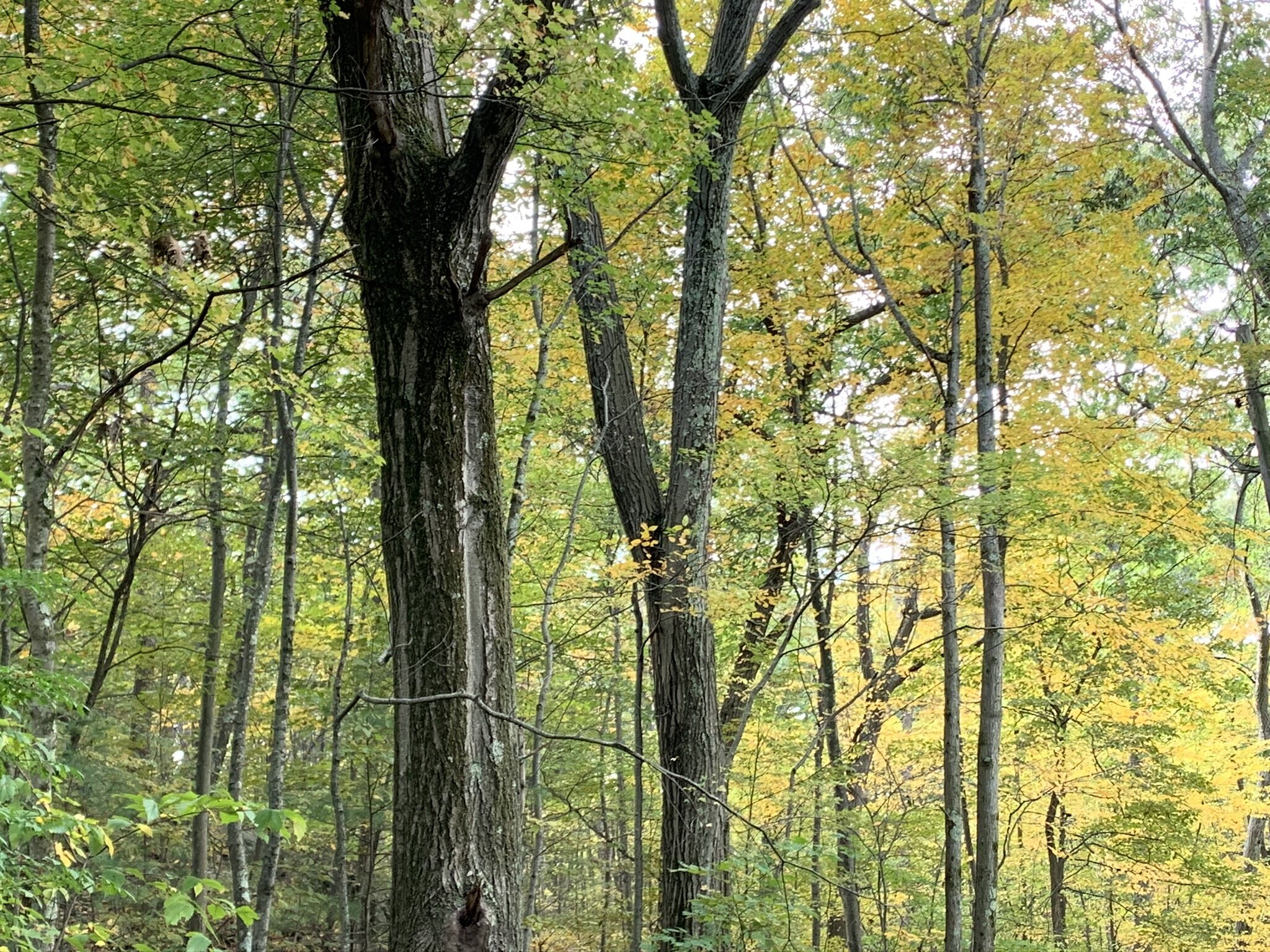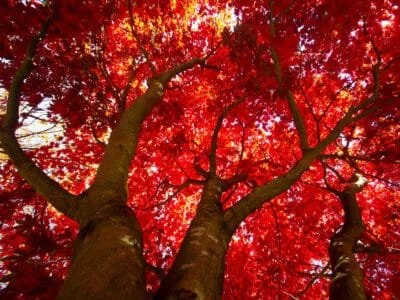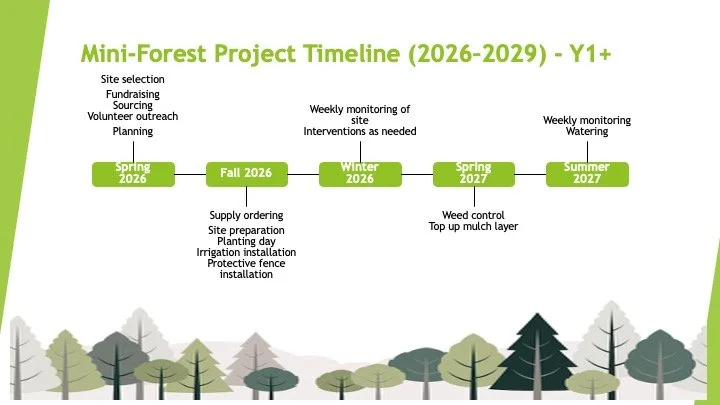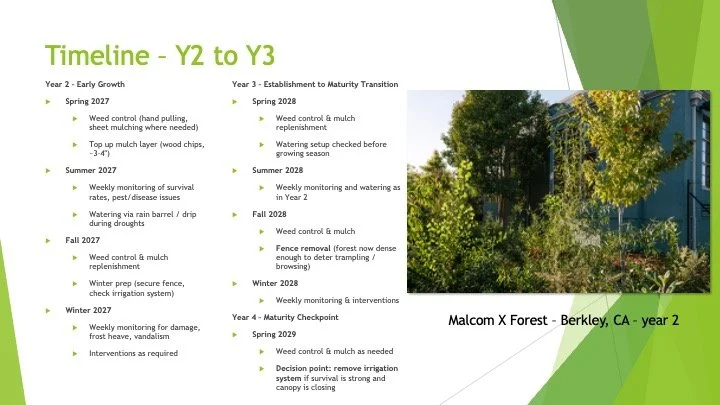
MedfordTrees Mini-Forest: The Livable Lab
TreesMedford is piloting a dense native mini-forest to help restore Medford’s tree canopy in one of our hotter, more paved neighborhoods. This “livable lab” will test new ways of planting and caring for trees, while creating shade, habitat, and a place to learn about urban ecology.
What Is a Mini-Forest
Accelerated Growth (Miyawaki Method):
Dense planting (3–5 seedlings per m²) mimics natural forest succession.
Trees and shrubs grow up to 10× faster than conventional plantings.
Achieves a self-sustaining ecosystem in ~20 years (vs. 100+ years naturally).
Carbon Sequestration & Climate Resilience:
Rapid biomass growth means higher rates of carbon capture in early decades.
Helps offset municipal greenhouse gas emissions and supports climate goals.
Improves local resilience by reducing urban heat-island effect.
Native Planting Focus:
Uses local native species adapted to soil, climate, and wildlife.
Reduces long-term maintenance, irrigation, and chemical input needs.
Builds ecological integrity by avoiding invasive or non-adapted species.
Wildlife & Keystone Species Benefits:
Keystone native species (e.g., oaks, willows, cherries) support hundreds of insect and bird species.
Provides critical pollinator habitat, bird nesting, and food webs.
Enhances urban biodiversity, supporting ecological balance.
Community & Municipal Benefits:
Small footprint (as little as 100 m²) makes it viable on under-used city parcels.
Provides visible greening, shade, and air quality improvements.
Engages community volunteers, schools, and civic groups in planting and stewardship.
Thank you for helping us find mini-forest locations!
Thank you to everyone who filled out the TreesMedford mini-forest survey. Your ideas helped us map potential sites across the city where more shade, habitat, and tree canopy are needed. Every suggested site was added to a shared map so we could see the full range of possibilities in one place.
From that city-wide map, we narrowed down the list by:
Focusing on heat island neighborhoods with higher temperatures, including parts of South Medford, Glenwood, and Wellington.
Selecting sites on city-owned land where a dense native planting could realistically move forward and fit with existing park uses.
Scoring each site for water access, visibility, site condition, invasive species, and heat-island impact.
From this process, we identified ten especially promising locations. Our first mini-forest will be a small proof-of-concept at one of these sites so we can test the approach, learn what works best, and apply those lessons to future projects.
Links:
Mini-Forest Proof of Concept (PoC)
TreesMedford is piloting a dense native mini-forest on city land in one of the ‘heat island’ neighborhoods of Glenwood, Wellington, or South Medford to help demonstrate Medford’s historical native tree canopy in one of our hotter, more paved neighborhoods. This “livable lab” will test new ways of planting and caring for trees, while creating shade, habitat, and a place to learn about urban ecology.
Key Points of the PoC
A 100 m² plot (10×10 m) planted at 3 plants/m² = ≈ 300 plants gives dense canopy & understory cover from early on.
Demonstrates rapid ecosystem establishment using Miyawaki method: layered planting of trees + understory shrubs + groundcover accelerates growth, soil stabilization, carbon capture.
Allows testing of survival & growth rates in local urban soil / light / moisture conditions, helping to refine species selection & planting technique.
Serves as a biodiversity hub: supports native insects, birds, small mammals; possibly serves as a demonstration / education site for the public.
Shows cost / maintenance needs (watering, fencing, protection) in local context; gives solid data for budgeting.
Community project in heat island neighborhood, high visibility.
Helps illustrate methods and species to address Medford tree canopy deficiencies (invasive replacement, drought tolerance, under-represented species).
Plant Selection with Intention.
While Medford historically falls into a number of natural communities, most of the sites recommended by the community that fall in the heat island neighborhoods are either Dry, Rich Oak Forest / Woodland, Oak–Hickory Forest, or Sugar Maple–Oak–Hickory Forest. With this in mind, the mini-forest subcommittee has assembled a list of target species from the appropriate natural communities.








